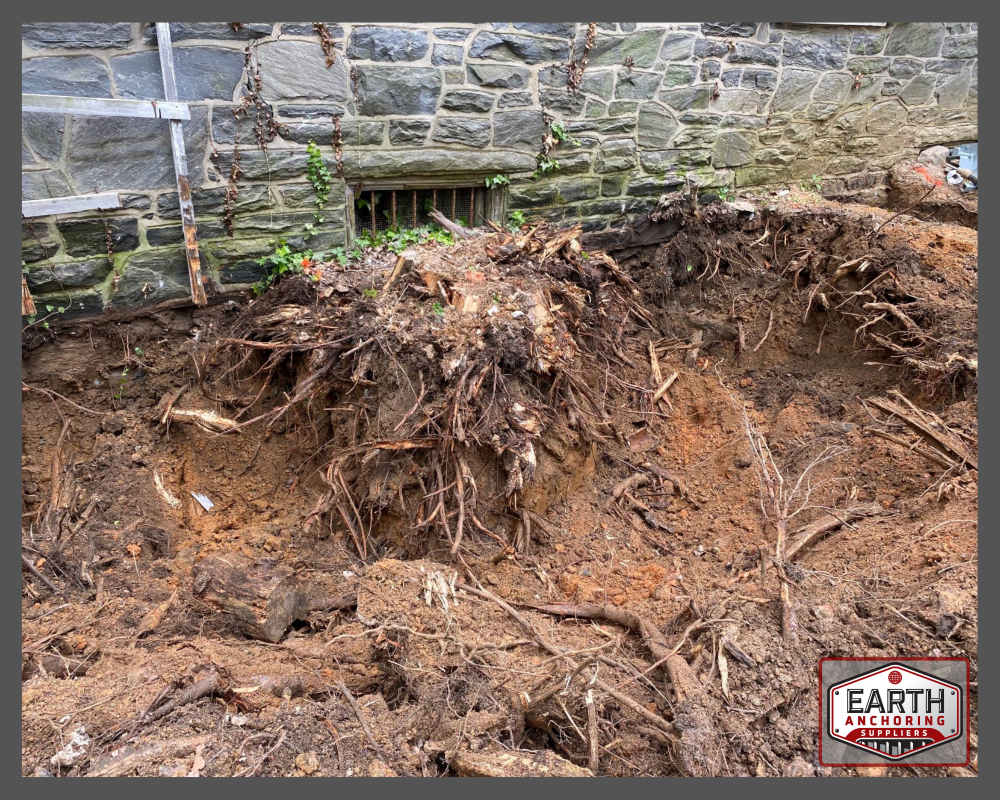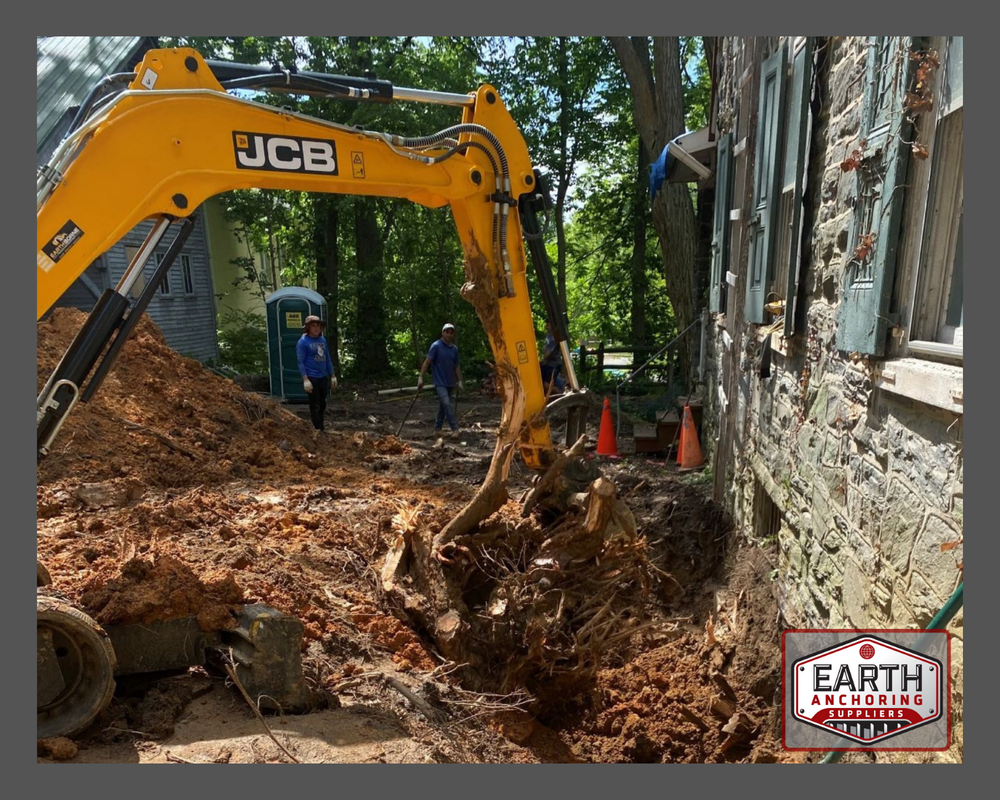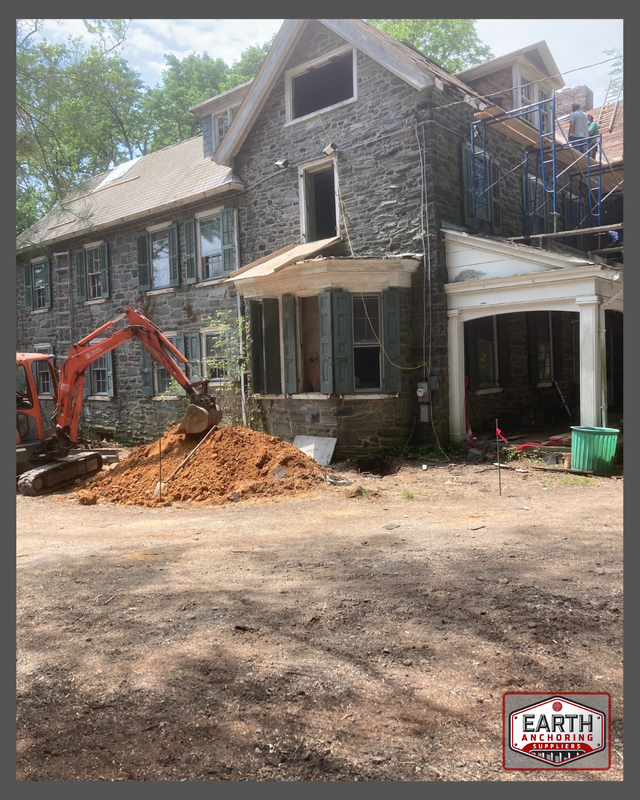Historic buildings provide a window to the past allowing us to explore our history and appreciate the beauty of the architecture and craftsmanship of the builders. By utilizing resources to restore and preserve historic structures, we not only preserve the past, but we preserve the future by preventing waste caused by demolished structures and manufacturing materials for new structures.
In Delaware County PA, one couple has taken on the challenge of restoring their newly acquired Maywood Mansion to its original beauty. This historic property has been overlooked for some time. Repairs were needed throughout the main house and the carriage barn (along with much needed landscaping) to address the future stability of the structures.
Maywood was originally sectioned from a local farmer’s land. It was sold as a two-acre vacant parcel to four unwed sisters in 1851. The sisters built the original home around 1855 which has since been expanded to what today is nearly 5,000 square-feet. The property also features a carriage house whose foundation dates back to 1844 and has been used as a garage in recent years. Though left in disrepair for some time, original features are still present throughout the manor and are set to be restored and preserved by the new owners. The current owners of Maywood have painstakingly created plans to restore and repair this historical gem so that generations may enjoy all the estate has to offer.

The Root of the Problem
Daniels Consulting Engineers were contracted to address the major foundation problems. The foundation damage was mainly caused by overgrown trees and the massive labyrinth of root systems growing into rubble field stone foundation. Trees had been growing up the outer walls of the manor for decades, a problem that would need to be addressed in order to save the structure. Daniels designed a plan to preserve the original foundation while ensuring much-needed support to secure the building for years to come. Daniels specified Chance square shaft helical piles with 8”, 10” lead sections. The addition of a 5” digger plate created an annulus for a grout column, adding strength to the pile. A helical pile surrounded by a grout column is a Helical Pulldown Micropile. The piles were installed to a depth of 18 feet and attached to the foundation using Chance underpinning brackets.
What is a Micropile? Watch this video to find out!
Trained Experts in Foundation Repair
Experienced Chance Certified installers from Breslin Contracting, Inc. were selected to complete the extensive repairs. They were first greeted with the complicated maze of roots which would need to be removed to complete the installation. A tree service was tasked with removing the labyrinth of trees encroaching on the structures.
“This property, just over an acre, has more trees than any property I have seen and allowed to grow wild, right up on the buildings. What stood out most was the terrible condition that this house was allowed to get into by previous owners… the confidence that the new owners had in their vision for Maywood made the install that much better.”
- Mike Parodi, owner and operations manager for Breslin
As the crew from Breslin began the process of removing root systems that were directly affecting the foundation, they were handed another obstacle. A large cistern was located in the crawlspace directly behind one of the underpinning locations. The cistern would have to be filled before work could continue. They used approximately 6-cubic-yards of flowable fill prior to being able to complete the helical pile installation.

As the root systems and cistern obstacles were navigated, Breslin’s crew was able to complete the pouring of concrete to stabilize the rubble field stone. They successfully installed eight SS5 Pulldown piles with 8” x 10”- 5ft. leads with 5” digger plates embedded 18 feet deep. Twelve Underpinning Brackets were installed to stabilize the foundation.
Helical piles can be installed in limited access spaces - near other buildings, in areas with low clearance, even inside a building! Since there are no vibrations or hammering involved with the installation, the risk of damaging the structure is mitigated.
Watch this short video to see how underpinning brackets are installed:
The teamwork of owners, engineers, and contractors, supported by the foundation experts at Earth Anchoring Suppliers, their local Chance distributor, ensured the conservation of this beautiful home for years to come.
Are you facing a difficult historic remediation project? Contact your local experts for guidance.







